The SS Yongala Wreck ⎯ Great Barrier Reef, Australia
Resting on the seabed since 1911, the SS Yongala is a 110-meter (360-foot) passenger ship that met its demise during a cyclone. Today, it stands as one of Australia’s most remarkable dive sites. The wreck, encrusted with vibrant coral and teeming with marine life, offers a glimpse into the past and an unparalleled diving experience. Divers can marvel at the sheer magnitude of the ship and encounter an abundance of marine creatures, including giant groupers, schools of trevally, turtles, and manta rays.
Barracuda Point ⏤ Sipadan Island, Malaysia
Located off the coast of Borneo, Sipadan Island is a diver’s paradise and Barracuda Point stands as its crown jewel. This world-renowned dive site is celebrated for its breathtaking spectacle of marine life, most notably the massive schools of barracuda that spiral through the water, creating a mesmerizing vortex. Imagine yourself descending into the crystal-clear waters, greeted by a swirling tornado of thousands of barracuda, their silvery scales flashing in the sunlight.
As if this wasn’t enough, Barracuda Point is also home to a rich diversity of other marine creatures. Whitetip reef sharks patrol the reef walls, while green and hawksbill turtles glide gracefully through the coral gardens. Large schools of jacks, bumphead parrotfish, and the occasional reef shark add to the vibrant tapestry of life; The coral formations themselves are equally impressive, adorned with colorful soft corals, sponges, and gorgonians, providing shelter for a myriad of smaller reef inhabitants.
The dive site is characterized by a sloping wall that drops off into the depths, offering a thrilling experience for divers of all levels. The current can be strong at times, adding to the excitement and attracting larger pelagic species. Whether you’re a seasoned diver or a wide-eyed beginner, a dive at Barracuda Point is an unforgettable experience that will leave you breathless with wonder and a profound appreciation for the beauty of the underwater world.
The Blue Hole ⎯ Belize
A giant sinkhole off the coast of Belize, the Blue Hole is a UNESCO World Heritage Site and a bucket-list destination for divers worldwide. This awe-inspiring natural wonder, measuring over 300 meters (984 feet) across and 125 meters (410 feet) deep, presents an otherworldly diving experience.
As you descend into the Blue Hole’s depths, you’ll transition from the vibrant coral reefs at the surface to a surreal realm of stalactites, formed during the last glacial period when sea levels were much lower. The sheer scale of these formations and the ethereal blue abyss that surrounds them create an atmosphere of profound wonder and a sense of exploration few other dive sites can match.
While the Blue Hole is not as teeming with marine life as some coral reefs, it does offer glimpses of intriguing creatures, including reef sharks, giant groupers, and various species of fish that have adapted to the unique environment of the sinkhole. Divers may also encounter bull sharks, particularly in the deeper sections.
Diving the Blue Hole is an advanced dive, requiring experience and appropriate certification due to its depth and the potential for nitrogen narcosis. However, for those prepared for the challenge, it offers a once-in-a-lifetime adventure into a realm of geological marvels and a glimpse into Earth’s ancient history. The combination of natural beauty, geological significance, and the thrill of exploring such a unique underwater environment solidifies the Blue Hole’s place as a premier scuba diving destination.
The Galapagos Islands ⎯ Ecuador
Synonymous with unique wildlife and evolutionary wonders, the Galapagos Islands also harbor an underwater realm teeming with life, making it a top destination for scuba diving in 202Situated in the Pacific Ocean, this archipelago offers a glimpse into a marine ecosystem unlike any other, where encounters with iconic species are not just possible but probable.
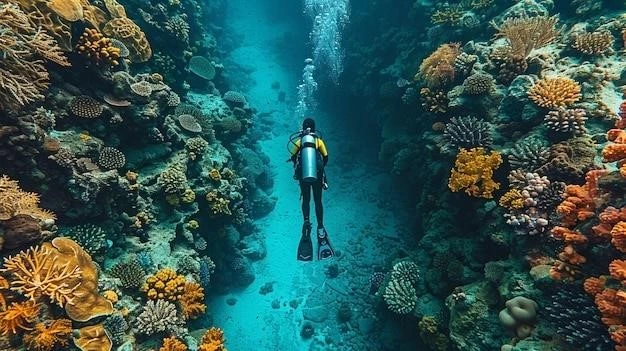
Imagine diving alongside marine iguanas, the only lizard species to have adapted to foraging for food in the ocean, or encountering playful sea lions darting through the kelp forests. Schools of hammerhead sharks patrol the depths, while majestic whale sharks grace these waters with their presence, particularly during the cooler months. Green sea turtles are a common sight, gliding effortlessly through the water, while the endemic Galapagos penguin, the only penguin species found north of the equator, adds to the islands’ unique charm.
The Galapagos Islands offer a variety of dive sites suitable for different levels of experience, from calm coves teeming with marine life to more challenging currents and deeper dives for experienced adventurers. Darwin’s Arch, Wolf Island, and Gordon Rocks are just a few of the many renowned dive sites that showcase the diversity and abundance of marine life that call this archipelago home.
A scuba diving trip to the Galapagos Islands is an experience that transcends ordinary vacations. It’s a journey into a world where wildlife encounters are unparalleled, where the forces of nature have shaped a unique ecosystem, and where the wonders of the underwater world will leave a lasting impression on those fortunate enough to explore its depths.
The Maldives
Renowned for its pristine beaches, luxurious overwater bungalows, and vibrant coral reefs, the Maldives is a diver’s paradise that consistently ranks among the top scuba diving destinations globally. This archipelago of over 1,000 coral islands, scattered across the Indian Ocean, offers an underwater wonderland teeming with a kaleidoscope of marine life and breathtaking underwater landscapes.
Imagine yourself immersed in crystal-clear waters, gliding over vibrant coral gardens adorned with an array of colorful fish. Manta rays, with their graceful wingspans, soar through the water, while gentle whale sharks, the largest fish in the sea, cruise effortlessly, their massive forms casting shadows on the ocean floor. Schools of fusiliers shimmer like a silver curtain, while colorful reef fish, parrotfish, angelfish, and butterflyfish, add to the vibrant tapestry of the underwater scenery.
The Maldives is home to a diverse range of dive sites, from gentle reefs perfect for beginners to exhilarating drift dives along channels where currents attract larger pelagic species. Experienced divers can explore shipwrecks teeming with life, while those seeking a more relaxed experience can snorkel in shallow lagoons, marveling at the coral gardens and their inhabitants.
Whether you’re a seasoned diver or a first-time explorer of the underwater world, the Maldives offers an unforgettable scuba diving experience. The combination of warm, clear waters, vibrant coral reefs, and an abundance of marine life makes it a destination that captures the imagination and leaves a lasting impression on those fortunate enough to explore its underwater treasures.
The Red Sea ⏤ Egypt
Renowned for its exceptional clarity, warm waters, and diverse marine life, the Red Sea, nestled between Africa and the Arabian Peninsula, stands as a premier scuba diving destination, beckoning adventurers and underwater enthusiasts from across the globe. With its vibrant coral reefs, dramatic drop-offs, and historic shipwrecks, the Red Sea offers a captivating underwater experience unlike any other.
Imagine yourself immersed in turquoise waters, sunlight dancing on the ocean floor, revealing a kaleidoscope of colors. Intricate coral gardens, teeming with life, provide shelter to a myriad of species. Schools of brightly colored fish, parrotfish, angelfish, and butterflyfish, dart among the corals, creating a mesmerizing underwater ballet. Turtles glide gracefully through the water, while moray eels peek out from their coral crevices, their serpentine bodies adding an air of mystery.
The Red Sea is home to iconic dive sites like the SS Thistlegorm, a World War II shipwreck that has become a legendary underwater museum, its hull encrusted with corals and its depths home to a variety of marine life. Ras Mohammed National Park, with its sheer walls adorned with soft corals and its abundance of pelagic species, is another must-dive location. For those seeking encounters with larger creatures, the possibility of spotting dolphins, sharks, and even the occasional dugong adds an element of thrill to any dive.
Whether you’re a seasoned diver drawn to the allure of shipwrecks and deep dives or a beginner captivated by the vibrant coral gardens, the Red Sea offers an unforgettable scuba diving experience. Its accessibility, combined with its exceptional marine biodiversity and warm, clear waters, solidifies its position as a top destination for underwater exploration in 2024.
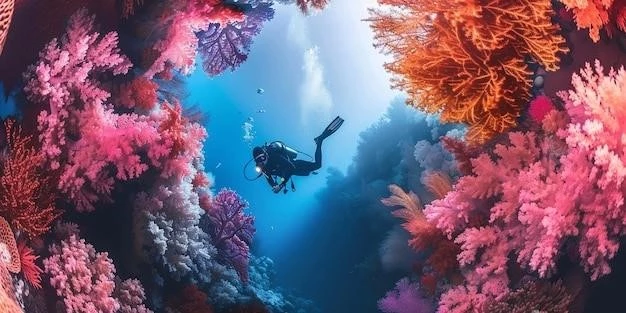
The Silfra Fissure ⎯ Iceland
Nestled within the heart of Iceland’s Þingvellir National Park, a UNESCO World Heritage site, lies the Silfra Fissure, a scuba diving destination unlike any other. This otherworldly realm, where the North American and Eurasian tectonic plates meet, offers a unique opportunity to dive between two continents in some of the clearest waters on Earth.
Imagine yourself suspended in crystal-clear glacial water, visibility extending over 100 meters (328 feet), revealing a surreal landscape of towering rock formations, canyons, and fissures carved by the forces of nature over millennia. The water, filtered through porous underground lava for decades, is exceptionally pure, creating an ethereal blue hue that enhances the otherworldly beauty of this underwater realm.
While marine life is not the main attraction at Silfra, the sight of algae formations, known as “troll hair,” swaying gently in the current, adds to the unique ambiance. The focus here is on the geological wonders and the unparalleled visibility, which allows for stunning underwater photography and a sense of exploration unlike any other dive site.
Diving in Silfra is a surreal experience, a journey into a realm where the forces of nature are palpable, where the boundaries between continents blur, and where the clarity of the water reveals an underwater world of breathtaking beauty. It’s an adventure that transcends the ordinary, leaving a lasting impression on those fortunate enough to explore its depths.
The Underwater Sculpture Park ⎯ Grenada
Off the coast of the Caribbean island of Grenada lies a unique underwater realm that merges art, marine conservation, and scuba diving into a singular, unforgettable experience – the Underwater Sculpture Park. Created by British sculptor Jason deCaires Taylor, this submerged gallery features a collection of life-sized sculptures, each one a testament to human interaction with the marine environment.
Imagine yourself descending into the turquoise waters, anticipation building as you approach the ocean floor. There, amidst the coral reefs and swaying sea fans, you encounter a collection of human figures, their forms both hauntingly beautiful and strangely serene. “Vicissitudes,” a circle of children holding hands, symbolizes the cycle of life and the interconnectedness of humanity and nature. “The Lost Correspondent,” seated at a desk frozen in time, evokes a sense of reflection and the passage of time.
But the Underwater Sculpture Park is more than just an art exhibit; it’s an evolving ecosystem. Over time, the sculptures have become artificial reefs, providing a substrate for coral growth and attracting a diverse array of marine life. Schools of fish weave through the figures, lobsters seek shelter in their crevices, and coral polyps transform the sculptures into living, breathing works of art.
Diving the Underwater Sculpture Park is an experience that transcends the ordinary. It’s a journey into a realm where art and nature intertwine, where human creativity fosters marine conservation, and where the underwater world becomes a canvas for both reflection and wonder.
Cocos Island ⏤ Costa Rica
Located over 300 miles off the Pacific coast of Costa Rica, Cocos Island is a remote and pristine island designated as a UNESCO World Heritage Site and renowned as a premier scuba diving destination for experienced divers seeking encounters with pelagic marine life. This emerald jewel, shrouded in legend and teeming with life, offers an unparalleled opportunity to witness the raw power and majesty of the open ocean.
Imagine yourself descending into the cobalt blue depths, anticipation building as the silhouette of a massive school of hammerhead sharks emerges from the deep. Cocos Island is renowned for its aggregations of these iconic creatures, hundreds strong, their distinctive silhouettes patrolling the waters around the island’s submerged pinnacles and seamounts.
But hammerheads are just the beginning. Schools of tuna and jacks, their scales flashing silver in the sunlight, create underwater tornadoes of movement. Manta rays, with their graceful wingspans, glide effortlessly through the water, while whale sharks, the largest fish in the ocean, make occasional appearances, their massive forms a testament to the abundance of life in these waters.
Cocos Island’s remoteness and strict conservation efforts have created a marine sanctuary where life thrives. Divers may encounter dolphins, sea turtles, eagle rays, and a variety of reef fish, all adding to the vibrant tapestry of this underwater paradise. For those seeking an adrenaline-pumping scuba diving adventure and a glimpse into the untamed beauty of the open ocean, Cocos Island is an experience that will stay with you long after you resurface.
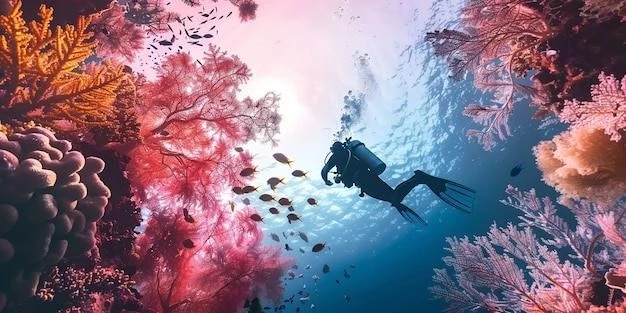
Raja Ampat ⎯ Indonesia
Considered the heart of the Coral Triangle, Raja Ampat in Indonesia is home to unparalleled marine biodiversity. With over 1,500 fish species and 700 types of coral, this archipelago offers a kaleidoscope of colors and an abundance of life. Divers can expect encounters with manta rays, wobbegong sharks, and a myriad of reef fish, making it a true underwater paradise.
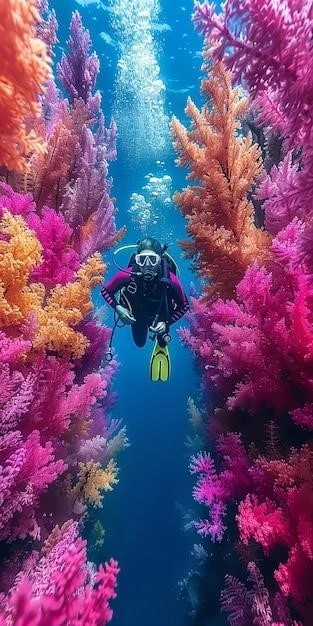
Essential Scuba Gear for 2024
Embarking on a scuba diving adventure requires reliable and well-maintained gear to ensure both safety and an enjoyable experience. Whether you’re a seasoned diver or just starting your underwater explorations, having the right equipment is paramount. Here’s a rundown of the essential scuba gear for 2024:
Dive Computer
A dive computer is an indispensable tool for monitoring depth, dive time, ascent rate, and nitrogen levels. Modern dive computers offer a range of features, including air integration, digital compasses, and even GPS tracking. Choosing the right dive computer depends on your experience level and diving style.
Buoyancy Compensator (BCD)
The BCD allows you to control your buoyancy underwater, enabling you to achieve neutral buoyancy and move effortlessly through the water. BCDs come in various styles and sizes, so it’s crucial to find one that fits comfortably and securely.
Regulator
Your regulator delivers breathable air from your scuba tank to your lungs. A good regulator should provide smooth and easy breathing at all depths. Regular servicing is essential to ensure optimal performance.
Dive Mask
A properly fitting dive mask is essential for clear underwater vision. Look for a mask that seals comfortably on your face and provides a wide field of view. Tempered glass lenses are standard for scuba diving masks.
Fins
Fins provide propulsion and maneuverability underwater. Different fin designs suit various diving styles, from powerful blade fins for open water diving to shorter, more maneuverable fins for wreck or reef exploration;
Wetsuit or Drysuit
Depending on water temperature, a wetsuit or drysuit provides thermal protection. Wetsuits come in varying thicknesses, while drysuits offer superior insulation for colder water diving.
Dive Gloves and Boots
Protecting your hands and feet from cold water, sharp corals, and other hazards is essential. Dive gloves and boots provide insulation and abrasion resistance.
Dive Lights
Even in clear water, a dive light is crucial for illuminating dark areas, such as crevices or inside shipwrecks. Dive lights also enhance colors and visibility during night dives.
Investing in high-quality scuba gear is an investment in your safety and enjoyment underwater. Regular maintenance and proper care will ensure your equipment performs optimally for years to come.
Choosing the Right Dive Computer
A dive computer is arguably a scuba diver’s most crucial piece of equipment, serving as a personalized underwater guide and safety monitor. With a plethora of options available, selecting the right dive computer can seem daunting. However, by considering your diving experience, preferred diving style, and desired features, you can narrow down the choices and find the perfect dive computer to accompany your underwater explorations.
Experience Level
For beginners, an entry-level dive computer with a user-friendly interface and essential dive data, such as depth, dive time, and ascent rate, is a great starting point. As you gain experience, you may want to consider more advanced features, such as air integration, nitrox compatibility, and digital compasses.
Diving Style
Your diving style also influences the type of dive computer that best suits your needs. Recreational divers who primarily enjoy exploring coral reefs and relatively shallow depths may opt for a basic wristwatch-style dive computer. Technical divers venturing into deeper waters or engaging in decompression diving require more advanced computers with sophisticated algorithms and multi-gas capabilities.
Features
Modern dive computers boast an array of features, some essential and others geared toward specific diving practices. Consider features such as air integration, which wirelessly transmits air pressure data from your tank to your computer, eliminating the need for a separate pressure gauge. Nitrox compatibility is crucial for divers using enriched air nitrox mixtures. Digital compasses enhance navigation, while dive logging capabilities allow you to track and review your dives.
Budget
Dive computers range in price from budget-friendly models to high-end units with advanced features. Determine your budget and prioritize features that align with your diving needs and experience level. Remember, a dive computer is an investment in your safety and enjoyment underwater, so choose wisely.
Selecting the Perfect Dive Mask
A well-fitting dive mask is crucial for clear underwater vision, ensuring a comfortable and enjoyable scuba diving experience. With numerous styles, shapes, and features available, selecting the perfect dive mask requires careful consideration of factors such as fit, visibility, and personal preferences.
Fit and Comfort
The most critical aspect of a dive mask is its fit. The mask skirt, the soft silicone part that seals against your face, should create a watertight seal without feeling too tight or restrictive. To test the fit, gently place the mask on your face without using the strap. Inhale slightly through your nose. The mask should suction to your face and stay in place. Look for masks with adjustable straps and a variety of skirt sizes to find the best fit for your face shape.
Visibility
A wider field of view enhances your underwater experience, allowing you to observe more of the underwater world without having to turn your head as frequently. Look for masks with large lenses and minimal frame obstruction. Tempered glass is standard for dive masks, ensuring durability and resistance to pressure changes.
Lens Type
While clear lenses are suitable for most diving conditions, tinted lenses can enhance visibility in specific environments. Amber or yellow lenses improve contrast in low-light conditions, while polarized lenses reduce glare from the surface. Divers who wear prescription glasses can opt for masks with prescription lenses or use corrective lens inserts.
Additional Features
Some dive masks offer additional features that enhance comfort and convenience. Low-volume masks are easier to clear and equalize, while masks with purge valves facilitate clearing water that may seep in. Consider features like nose pockets, which allow you to equalize ear pressure more easily, and adjustable straps for a secure and comfortable fit.
Finding the perfect dive mask often involves trying on different models and finding one that feels comfortable and provides a clear field of vision. Proper care and maintenance, such as rinsing with fresh water after each dive and storing in a cool, dry place, will prolong the life of your mask and ensure many enjoyable dives to come.
Best BCD Options for Every Diver
A buoyancy compensator, or BCD, is a scuba diver’s essential piece of gear, providing buoyancy control, tank support, and attachment points for accessories. With a diverse range of styles and features available, selecting the best BCD depends on individual diving needs, preferences, and experience level.
Jacket Style BCDs
Jacket-style BCDs are the most common type, offering a comfortable and secure fit for most divers. These BCDs inflate around the torso, providing ample lift and stability. Jacket BCDs are suitable for beginners and experienced divers alike, particularly for recreational diving in a variety of environments.
Back-Inflate BCDs
Back-inflate BCDs, as the name suggests, inflate primarily behind the diver, streamlining the profile and providing a more horizontal trim underwater. This style is popular among technical divers, photographers, and videographers who prefer a less bulky profile and greater freedom of movement.
Wing Style BCDs
Wing-style BCDs feature a horseshoe-shaped bladder that sits on the back, providing a high lift capacity and excellent buoyancy control. These BCDs are commonly used for technical diving, wreck diving, and other specialized diving activities where carrying additional equipment is necessary.
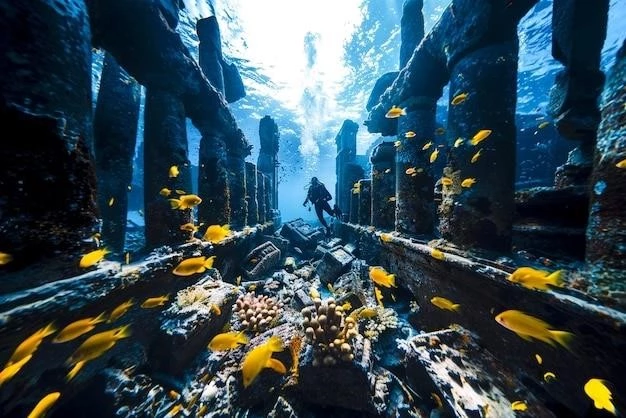
Travel BCDs
Travel BCDs are designed for portability and lightweight construction, making them ideal for divers on the go. These BCDs often feature a minimalist design, lighter-weight materials, and pack down smaller for easy transport.
Considerations for Selection
When choosing a BCD, consider factors such as fit, lift capacity, adjustability, and features. Ensure the BCD fits comfortably and securely, providing adequate lift for your body type and diving conditions. Adjustable straps and cummerbunds allow for a customized fit. Features like integrated weight systems, trim pockets, and D-rings for attaching accessories enhance convenience and functionality.
Ultimately, the best BCD is one that meets your individual diving needs and preferences, ensuring comfort, safety, and an enjoyable underwater experience.










